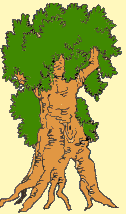LAWSONIA INERMIS
LAWSONIA INERMIS
LAWSONIA INERMIS
Wolof: Fouden and Lali in Goun
It is a shrub 3-4m high, with a branched and very branched bottom; Its branches are slender with often thorny ends. The bark is smooth, whitish, fibrous, with a pale pink slice. The light gray twigs are more or less quadrangular when young. The leaves are opposite, simple, glabrous, and elliptical, with a sharp wedge-shaped top, tapering wedge-shaped base. The blade is finely punctuated on both sides with 1-2mm long petioles. The fruit resembles an indehiscent spherical capsule, glabrous, with calyx at the base and persistent style at the top, about 5mm in diameter, light brown when ripe, containing numerous pyramidals.
Flowering takes place in the second part of the dry season and at the start of the rainy season and it is a plant that has been cultivated near homes, in Sahelian to Sudanese areas since antiquity and prefers sandy soils.
She is native to Arabia and Iran, the Mediterranean and subtropical Africa, Madagascar, Asia, and Australia. In Niger, it is localized in gardens.
Medicinal Uses: It is an emmenagogue and abortive plant. Its roots are used as dewormers, diuretics, and abortifacient, but also to treat gonorrhea and bronchitis. The leaves have bactericidal properties and are used for leprosy, ulcer, whitlow, elephantiasis, jaundice, and hepatitis. They are also used as a brain stimulant and against epilepsy. The flowers are used in the preparation of perfume in cosmetics and twigs as toothpicks
Add a comment























